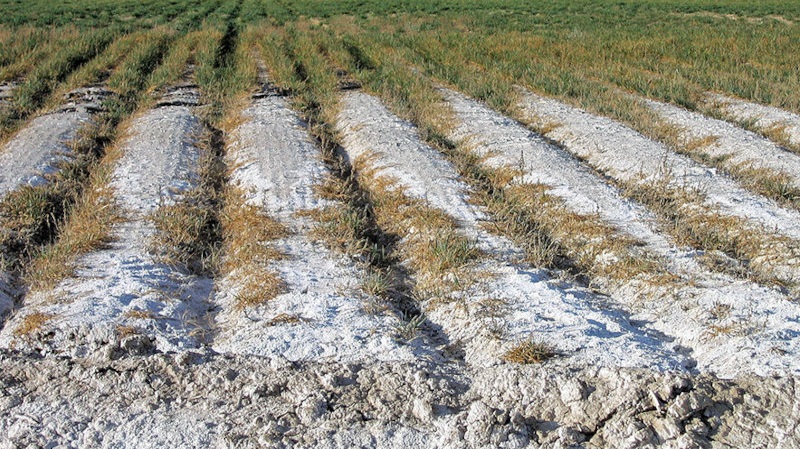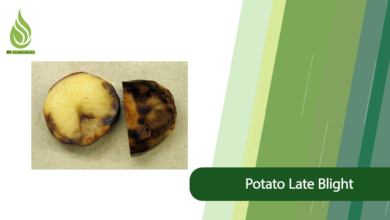
What are the methods to control and remove soil salinity?
Soil salinity is one of the significant issues in agriculture. Saline soil affects plant growth negatively and results in reduced agricultural productivity. Farmers need to be informed about the salinity of their soil and address this problem. Various factors play a role in increasing soil salinity and soil salinization. In this article, we will examine the reasons for soil salinity and explain effective methods to control and remove soil salinity.
What does soil salinity mean?
Soil salinity refers to the amount of salts and minerals present in the soil. Excessive salt disrupts the balance of soil and water, hindering plant growth.
This problem occurs more frequently in dry and semi-arid regions. However, areas affected by salt (such as coastal regions) also experience soil salinity in semi-humid or humid climates. Lands irrigated with high-salt groundwater are usually prone to saline soil. Our country is among the regions where salinity in water is a major issue in agriculture.
Soil salinity can be examined in two forms:
- Absolute salinity
- Relative salinity
What is soil absolute salinity?
Soil absolute salinity refers to the amount of dissolved salts in the soil. This indicator is expressed as the electrical conductivity of the soil saturation extract (ECe) and its unit is deciSiemens per meter (dS/m). High electrical conductivity indicates high soil salinity. The lower the soil salinity, the lower the EC value. As a result, the soil provides nutrients to the plant more and better when the soil is not saline.
Soil absolute salinity depends on various factors:
- Types of salts present in the soil: Salts such as sodium chloride, sodium sulfate, sodium carbonate, etc.
- Amount of soluble salts in the soil: The higher the amount of soluble salts, the higher the soil absolute salinity.
- Soil depth: Salinity generally increases with soil depth.
- Regional climate conditions: In dry and semi-arid regions, soil absolute salinity is higher.
Soil absolute salinity is classified into 4 categories:
- Non-saline soil (EC < 4 dS/m)
- Low salinity soil (4 < EC < 8 dS/m)
- Medium salinity soil (8 < EC < 16 dS/m)
- Highly saline soil (EC > 16 dS/m)
This classification is crucial for managing and improving saline soil conditions.

What is soil relative salinity?
Soil relative salinity refers to the ratio of soil salinity (EC soil) to irrigation water salinity (EC water). This indicator indicates the level of salt accumulation in the soil after irrigation. Relative salinity has a significant impact on plant growth. Even in soils with low electrical conductivity, if the ratio of soluble materials to other components is high, it can pose challenges for plant growth.
The formula for calculating soil relative salinity is as follows:
Relative soil salinity = EC soil / EC water
The values of relative soil salinity are as follows:
- Less than 1: Indicates leaching of salts from the soil
- Equal to 1: Indicates a balance between salt inflow and outflow
- Greater than 1: Indicates accumulation and density of salts in the soil
Relative soil salinity depends on various factors. The most important of these factors include:
- Type and amount of salts present in irrigation water
- Irrigation water quantity
- Soil texture and clay percentage
- Evaporation and transpiration rates in the region
- Drainage conditions and salinization processes
Examining relative soil salinity is crucial in irrigation management and improving saline soil conditions.
What are the indicators of soil salinity?
Some indicators of soil salinity include:
Soil appearance:
- Accumulation of white salts on the soil surface (salinization)
- Change in soil color to gray or grayish-blue
- Soil compaction and hardening
Plant status:
- Reduced growth and performance of plants
- Yellowing and wilting of leaves
- Premature leaf drop
- Decreased plant cover density
Physical and chemical indicators:
- Increase in electrical conductivity (EC) of soil
- Increase in soluble sodium (Na) and chloride (Cl) levels in the soil
- Decrease in organic matter and nitrogen content in soil
- Decrease in soil pH and soil alkalization (Note: When soil pH is above 8.3, the soil usually becomes saline.)
- Increase in exchangeable sodium percentage (ESP) of soil
Biological indicators:
- Decrease in soil microorganism activity
- Decrease in biodiversity of plant and animal communities
These indicators can be observed individually or in combination in saline soils. Identifying these indicators significantly aids in diagnosing and managing soil salinity effectively.
What problems does soil salinity cause for plants?
Soil salinity can create the following problems for plants:
- Reduction in water absorption by roots: Increased osmotic potential of the soil makes it harder for plants to absorb water, leading to wilting and reduced growth.
- Toxicity of ions: Accumulation of certain ions such as sodium, chloride, and boron at high concentrations can be toxic to plants, causing leaf damage and eventual plant death.
- Disruption in nutrient absorption: Salinity decreases the absorption of essential nutrients like nitrogen, phosphorus, potassium, and magnesium by the roots, impacting plant growth and performance.
- Physical changes in soil: Salinity can cause soil compaction and hardening, reducing soil permeability and hindering root growth.
- Osmotic stress: Increased concentration of soluble salts leads to osmotic stress in plants, making it difficult for them to absorb water from the soil.
- Reduction in activity of beneficial soil microorganisms: Salinity reduces the diversity and activity of beneficial soil microorganisms, negatively affecting nutrient cycling and soil fertility.
These issues can severely impact the growth and performance of plants either individually or in combination.
How to remove and control soil salinity?
Soil salinity can cause the soil to have difficulty absorbing water. Reduced nutrient absorption, the creation of toxic conditions in the soil, decreased chlorophyll in plants, and reduced crop yield are the most significant harms of soil salinity. There are several strategies to address soil salinity, and in this section, we will examine the most important ones.

Soil Leaching
Leaching involves applying irrigation with non-saline water in quantities exceeding the plant’s needs. Leaching nutrients from the soil is not ideal; however, sometimes soil leaching is performed to remove salt from the land. The purpose of leaching is to wash soluble salts from the soil. In this method, excess soluble salts present in the soil are washed away and removed from the soil. Having proper drainage conditions to remove excess water from the soil is essential.
Proper Drainage
Establishing surface and subsurface drainage systems is one of the methods to control and reduce soil salinity. Depending on the type of crop and the availability of water and the land’s condition, either deep or surface drainage is carried out. The goal of this work is to remove soluble salts from the soil. You can do this while you’re preparing agricultural land to plant.
Irrigation Management
For better control of soil salinity, it is advisable to consider shorter intervals between land irrigations. Short-term irrigation prevents soil salinity. Short-term irrigation ensures that the desired concentration of the solution in the soil does not increase, thus correcting soil salinity. Modern irrigation methods (such as drip and sprinkler irrigation) have significant positive effects on improving and remedying soil salinity. Ensure that the water used for irrigation is not saline. Saline water not only does not reduce soil salinity but can exacerbate it.
Use of Soil Amendments
Soil amendment fertilizers can improve the physical and chemical conditions of the soil and reduce salinity levels. Special soil amendment fertilizers are acidic and adjust the soil’s alkaline properties. The amount of acidification needed by the fertilizer depends on the soil’s alkalinity level. The amount of acidification should be sufficient to bring the soil into a balanced state; excessive soil acidification can also create problems for plants. Organic fertilizers are the best soil amendments. Phosphoric acids and sulfuric acids are also good neutralizers.
One of the best soil amendments is sulfur. After entering the ground, sulfur converts to sulfuric acid. The produced sulfuric acid helps reduce the soil pH. Lowering the pH reduces soil salinity. It is worth mentioning that using sulfur for acidic soils is not recommended.
To apply sulfur to agricultural land, you can use ammonium sulfate fertilizer. This fertilizer provides a combination of nitrogen and sulfur for the soil. Ammonium sulfate is usually recommended for saline lands. The effect of ammonium sulfate on date palms, pistachios, etc., is excellent.
Selecting Salt-Resistant Plant Species
Sometimes, despite taking control measures, soil salinity cannot be eliminated. In such circumstances, it is better to cultivate crops that are resistant to soil salinity when using the land. Among the plants that are resistant to saline and alkaline soils are canola, alfalfa, cotton, sugar beets, and barley.
